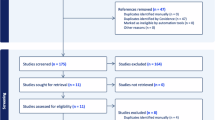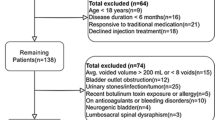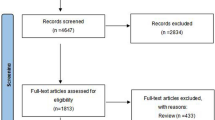Abstract
Intravesical injections of botulinum toxin-A have become established as an effective therapy in the management of neurogenic and idiopathic detrusor overactivity that is refractory to treatment with anticholinergic medication. The effects of the toxin are finite and repeated injections are required to sustain the beneficial therapeutic effects. The available data suggest a reproducible and sustained improvement in symptoms as well as urodynamic parameters following repeated injections of botulinum toxin-A. The reported incidence of adverse events is low and resistance to the toxin is uncommon. The timing of repeat injections within the published data is variable, reflecting differing practise among clinicians, but is typically 6–12 months. Larger scale studies are still required to clarify the usefulness of botulinum toxin-A as a long-term treatment in the management of detrusor overactivity.
Key Points
-
Repeated intradetrusor injections of botulinum toxin-A are being used as a long-term management strategy for some patients with detrusor overactivity
-
Repeated injections of botulinum toxin-A can maintain the symptomatic improvement derived from the initial treatment in many patients with neurogenic or idiopathic detrusor overactivity
-
The incidence of serious adverse events such as weakness distant from the site of injection seems to be low
-
Reported rates of treatment failure following repeated injections seem to be low, although current data are short term and incomplete
-
Re-injection is generally at the request of the patient, although in some patients adverse cystometric changes can be used as criteria for re-treatment
This is a preview of subscription content, access via your institution
Access options
Subscribe to this journal
Receive 12 print issues and online access
$189.00 per year
only $15.75 per issue
Buy this article
- Purchase on SpringerLink
- Instant access to full article PDF
Prices may be subject to local taxes which are calculated during checkout
Similar content being viewed by others
References
Apostolidis, A. et al. Recommendations on the use of botulinum toxin in the treatment of lower urinary tract disorders and pelvic floor dysfunctions: A European consensus report. Eur. Urol. 55, 100–120 (2009).
Grosse, J., Kramer, G. & Stohrer, M. Success of repeat detrusor injections of botulinum a toxin in patients with severe neurogenic detrusor overactivity and incontinence. Eur. Urol. 47, 653–659 (2005).
Karsenty, G., Reitz, A., Lindemann, G., Boy, S. & Schurch, B. Persistence of therapeutic effect after repeated injections of botulinum toxin type A to treat incontinence due to neurogenic detrusor overactivity. Urology 68, 1193–1197 (2006).
Akbar, M. et al. Repeated botulinum-A toxin injections in the treatment of myelodysplastic children and patients with spinal cord injuries with neurogenic bladder dysfunction. BJU Int. 100, 639–645 (2007).
Kalsi, V. et al. Botulinum injections for the treatment of bladder symptoms of multiple sclerosis. Ann. Neurol. 62, 452–457 (2007).
Reitz, A. et al. Do repeat intradetrusor botulinum toxin type a injections yield valuable results? Clinical and urodynamic results after five injections in patients with neurogenic detrusor overactivity. Eur. Urol. 52, 1729–1735 (2007).
Del, P. G. et al. Neurogenic detrusor overactivity treated with English botulinum toxin a: 8-year experience of one single centre. Eur. Urol. 53, 1013–1019 (2008).
Giannantoni, A., Mearini, E., Del, Z. M. & Porena, M. Six-year follow-up of botulinum toxin A intradetrusorial injections in patients with refractory neurogenic detrusor overactivity: clinical and urodynamic results. Eur. Urol. 55, 705–711 (2009).
Ghalayini, I. F., Al-Ghazo, M. A. & Elnasser, Z. A. Is efficacy of repeated intradetrusor botulinum toxin type A (Dysport®) injections dose dependent? Clinical and urodynamic results after four injections in patients with drug-resistant neurogenic detrusor overactivity. Int. Urol. Nephrol. 41, 805–813 (2009).
Pannek, J., Gocking, K. & Bersch, U. Long-term effects of repeated intradetrusor botulinum neurotoxin A injections on detrusor function in patients with neurogenic bladder dysfunction. BJU Int. 104, 1246–1250 (2009).
Sahai, A., Dowson, C., Khan, M. S. & Dasgupta, P. Repeated injections of botulinum toxin-A for idiopathic detrusor overactivity. Urology 75, 552–558 (2010).
Khan, S. et al. What a patient with refractory idiopathic detrusor overactivity should know about botulinum neurotoxin type A injection. J. Urol. 181, 1773–1778 (2009).
Kuschel, S., Werner, M., Schmid, D. M., Faust, E. & Schuessler, B. Botulinum toxin-A for idiopathic overactivity of the vesical detrusor: a 2-year follow-up. Int. Urogynecol. J. Pelvic Floor Dysfunct. 19, 905–909 (2008).
Mehnert, U. et al. A morphological evaluation of botulinum neurotoxin A injections into the detrusor muscle using magnetic resonance imaging. World J. Urol. 27, 397–403 (2009).
Antonucci, F., Rossi, C., Gianfranceschi, L., Rossetto, O. & Caleo, M. Long-distance retrograde effects of botulinum neurotoxin A. J. Neurosci. 28, 3689–3696 (2008).
Apostolidis, A. et al. Histological changes in the urothelium and suburothelium of human overactive bladder following intradetrusor injections of botulinum neurotoxin type A for the treatment of neurogenic or idiopathic detrusor overactivity. Eur. Urol. 53, 1245–1253 (2008).
Comperat, E. et al. Histologic features in the urinary bladder wall affected from neurogenic overactivity--a comparison of inflammation, oedema and fibrosis with and without injection of botulinum toxin type A. Eur. Urol. 50, 1058–1064 (2006).
Schulte-Baukloh, H. et al. Botulinum neurotoxin type A in urology: antibodies as a cause of therapy failure. Int. J. Urol. 15, 407–415 (2008).
Anderson, T. J. et al. Botulinum toxin treatment of spasmodic torticollis. J. R. Soc. Med. 85, 524–529 (1992).
Greene, P., Fahn, S. & Diamond, B. Development of resistance to botulinum toxin type A in patients with torticollis. Mov. Disord. 9, 213–217 (1994).
Jankovic, J. & Schwartz, K. Response and immunoresistance to botulinum toxin injections. Neurology 45, 1743–1746 (1995).
Zuber, M., Sebald, M., Bathien, N., de Recondo, J. & Rondot, P. Botulinum antibodies in dystonic patients treated with type A botulinum toxin: frequency and significance. Neurology 43, 1715–1718 (1993).
Jankovic, J., Vuong, K. D. & Ahsan, J. Comparison of efficacy and immunogenicity of original versus current botulinum toxin in cervical dystonia. Neurology 60, 1186–1188 (2003).
Dressler, D. & Adib, S. F. New formulation of Botox: complete antibody-induced treatment failure in cervical dystonia. J. Neurol. Neurosurg. Psychiatry 78, 108–109 (2007).
Dressler, D. Clinical presentation and management of antibody-induced failure of botulinum toxin therapy. Mov. Disord. 19 (Suppl. 8), S92–S100 (2004).
Sangster, P. et al. Is the Extensor digitorum brevis test useful in predicting resistance to treatment with botulinum toxin-A for patients with overactive bladder [abstract MP23-04]? J. Endourol. 23 (Suppl. 1), 74 (2009).
Dressler, D. & Bigalke, H. Antibody-induced failure of botulinum toxin type B therapy in de novo patients. Eur. Neurol. 52, 132–135 (2004).
Acknowledgements
The authors are writing on behalf of the GKT Botulinum Study group, and would like to thank the Urology Foundation, and Kamran Ahmed for his help with this Review. P. Dasgupta and A. Sahai acknowledge financial support from the Department of Health via the National Institute for Health Research (NIHR) comprehensive Biomedical Research Centre award to Guy's & St Thomas' NHS Foundation Trust in partnership with King's College London and King's College Hospital NHS Foundation Trust. They also acknowledge the support of the MRC Centre for Transplantation.
Author information
Authors and Affiliations
Contributions
C. Dowson and A. Sahai researched data for, and wrote, the article. All authors were involved in the discussions of content and review/editing of the manuscript before submission. P. Dasgupta, M. S. Khan and A. Sahai reviewed and edited the article before submission.
Corresponding author
Ethics declarations
Competing interests
The authors declare an association with Allergan Ltd: Grant support (all authors), Consultant (P. Dasgupta), Speakers bureau (honoraria) (A. Sahai).
Rights and permissions
About this article
Cite this article
Dowson, C., Khan, M., Dasgupta, P. et al. Repeat botulinum toxin-A injections for treatment of adult detrusor overactivity. Nat Rev Urol 7, 661–667 (2010). https://doi.org/10.1038/nrurol.2010.187
Published:
Issue date:
DOI: https://doi.org/10.1038/nrurol.2010.187
This article is cited by
-
OnabotulinumtoxinA (Botox®): A Review of its Use in the Treatment of Urinary Incontinence in Patients with Multiple Sclerosis or Subcervical Spinal Cord Injury
Drugs (2014)
-
Repeated botulinum toxin type A (Dysport®) injections for women with intractable detrusor overactivity: a prospective outcome study
International Urogynecology Journal (2014)
-
Urinary Incontinence: Diagnosis and Treatment in the Elderly
Current Translational Geriatrics and Experimental Gerontology Reports (2013)
-
Neurogenic Detrusor Overactivity in Patients With Spinal Cord Injury: Evaluation and Management
Current Urology Reports (2011)



